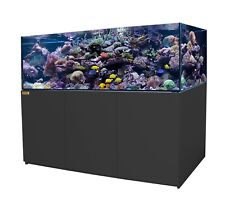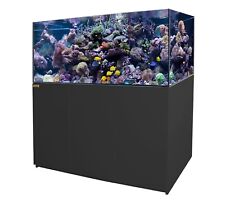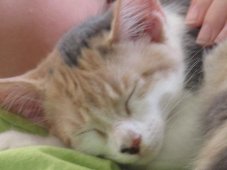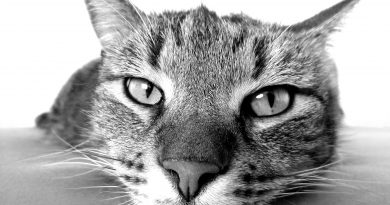Osteoarthritis and Your Cat

Older cats with painful joints may be reluctant to move around, and may also show behavioral changes such as inappropriate elimination. Walking to a distant litter box, climbing stairs and climbing again over the edge of the box may prove to be too much for an elderly cat in pain. Affected cats may also be lame, may stop grooming themselves and may even start eating less, consequently losing weight. It is heartbreaking to see your lifelong pet limp gingerly in clear discomfort. Luckily, efforts are ongoing to find an effective and safe way to manage the discomfort of this chronic and progressive condition in cats.
Treatment for osteoarthritis in humans and dogs usually involves a combination of exercise, weight control and long-term drug therapy. Exercise is important because it helps strengthen the muscles that support bones and joints. It is well known that human arthritis benefits significantly from a program of regular, moderate exercise.
Because we usually don’t take our cats out for regular walks (as we do with dogs), it is difficult to regulate the amount of exercise they receive. Still, moderate play that encourages your cat to keep moving without leaping and jumping is very helpful. We can also make a big difference when it comes to body weight. Because the stress on bones and joints can be severe in obese animals, it is important to bring the body weight down to a normal range. Weight loss alone can, in some cases, significantly improve your cat’s symptoms. Be sure to talk to your veterinarian before starting a weight loss program for your cat, because cats are especially susceptible to serious liver disease if they lose weight too rapidly.
The medical management of osteoarthritis includes a variety of drugs and nutritional supplements (sometimes called nutraceuticals). The most common category of drug therapy has long been non-steroidal anti-inflammatory drugs (NSAIDs) such as aspirin. Because long-term treatment with NSAIDs can lead to undesirable gastrointestinal side effects (and chronic therapy with steroidal drugs, also a mainstay for feline arthritis, has its own disadvantages), alternative products have become increasingly popular.
Recently, much attention has been focused on chondroprotective (cartilage-protecting) compounds such as glucosamine, chondroitin sulfate, polysulfated glycosaminoglycans and other nutraceuticals. These are now being widely used in humans and animals, and several vitamin companies now make supplements formulated specifically for cats that contain glucosamine and other joint protectors. There are also some reported benefits of supplementing with fatty acids and antioxidants, and pain relief from acupuncture. Until controlled clinical trials are performed to evaluate the efficacy of these methods, it is unclear just which products and combinations are most beneficial. What is clear, however, is the universal commitment and concern that our feline companions live a life of quality even in their senior years.













